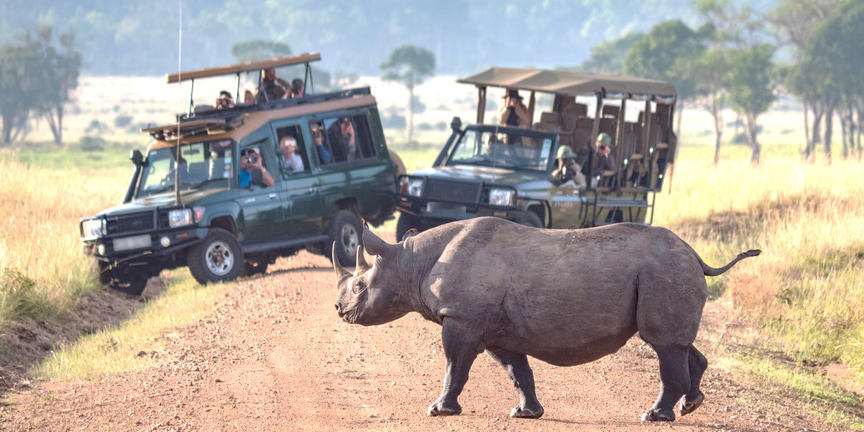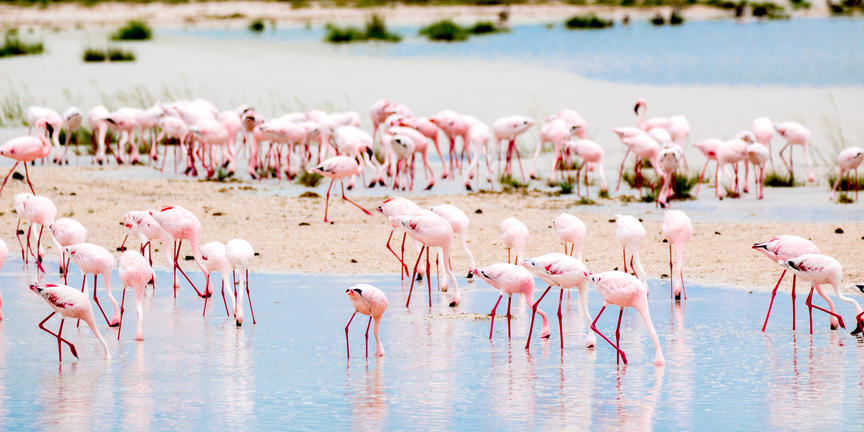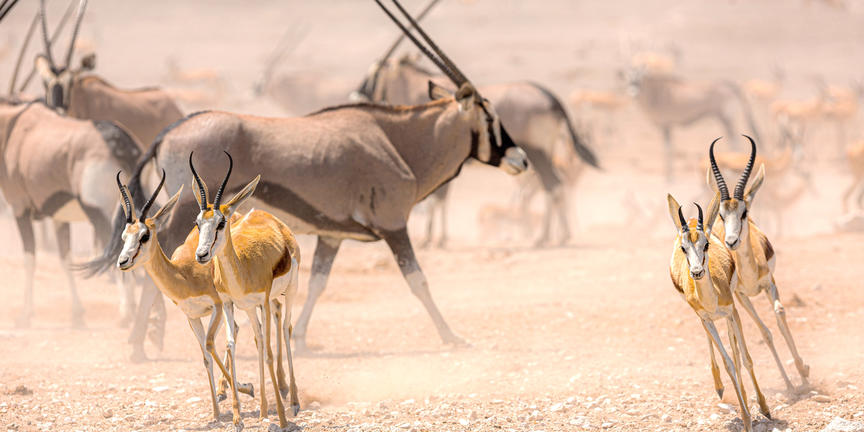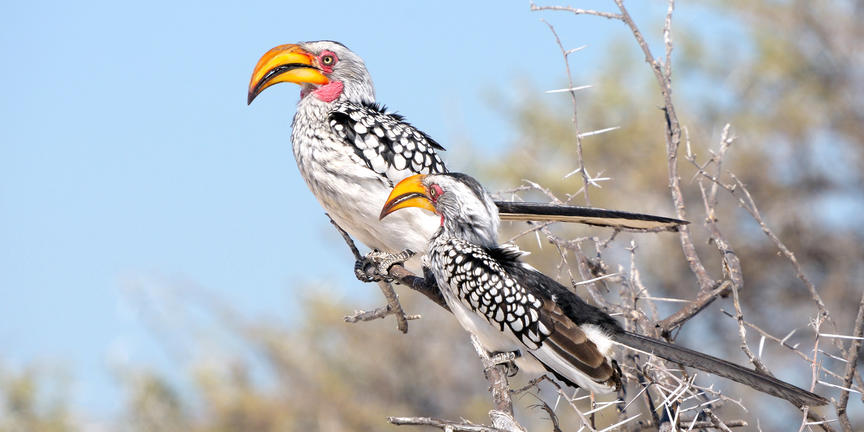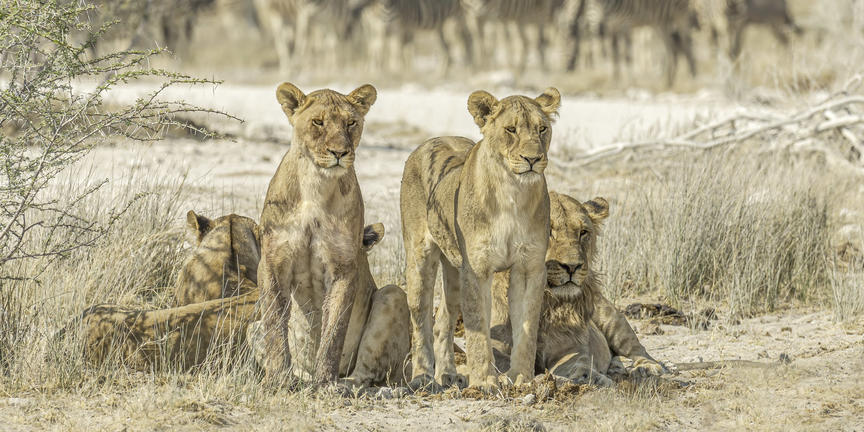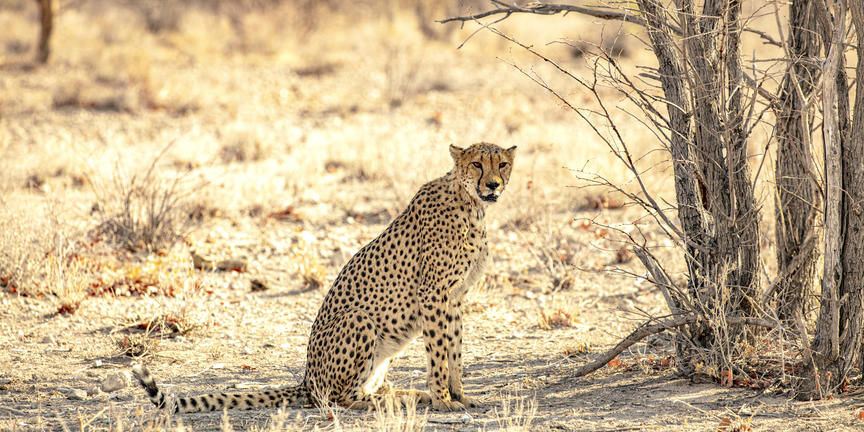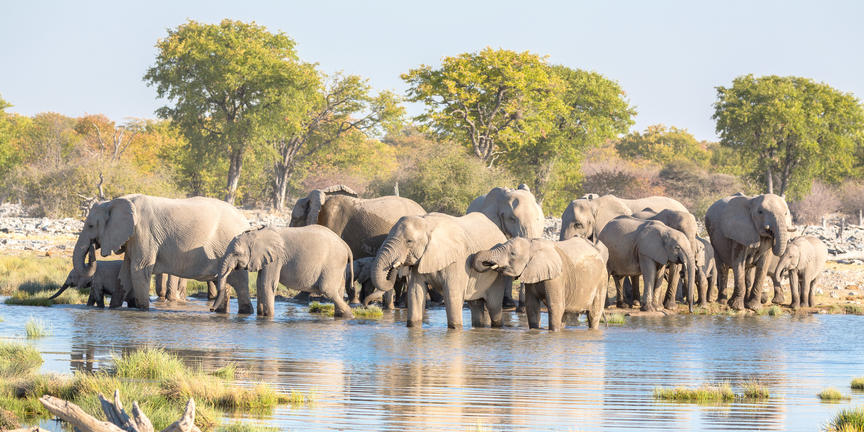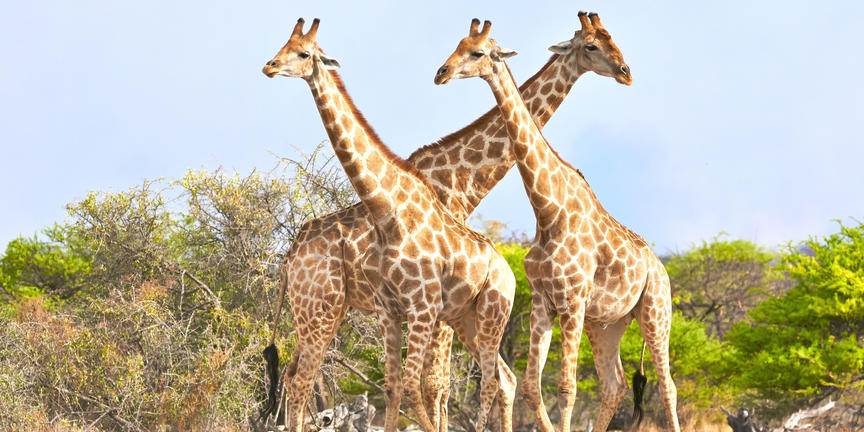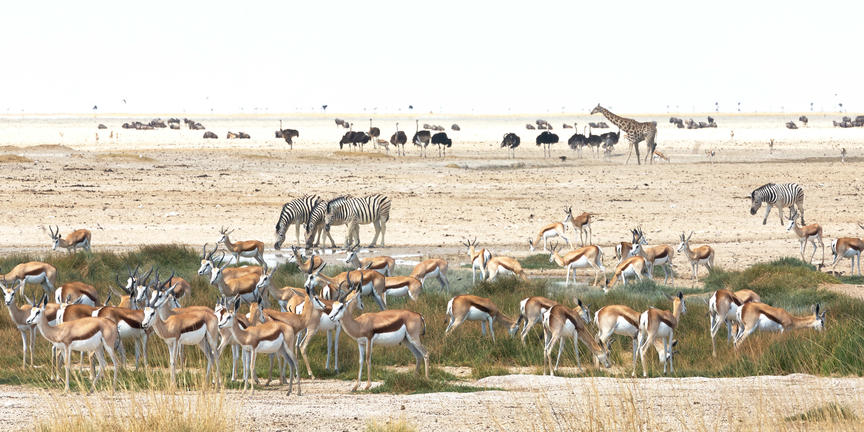About 30 springs and waterholes along the pan's southern edge attract large concentrations of every representative species in the park - especially in the dry season, which runs from April to September.
Wildlife you are likely to see, at close quarters if you spend some time at the waterholes, includes a growing number of rhino - both black and white - and the endemic black-faced impala and Damara dik-dik. The Namibian trademarks, gemsbok and springbok, are common and there are good numbers of southern Africa's big game including elephant, lion, leopard, cheetah, caracal, brown and spotted hyena, eland, roan, kudu, wildebeest, red hartebeest, Hartman's mountain (only in the west) and Burchell's plains zebra, and black-backed jackal.
Birding is excellent, particularly after good rains when up to a million flamingos may congregate in the pan. Etosha is one of only two places in southern Africa where blue cranes and greater and lesser flamingos breed. Raptors are common with 46 species recorded including the Bateleur, martial, Wahlberg's and tawny eagles; and Egyptian, African white-backed and lappet-faced vultures. Ostriches, secretary birds, kori bustards and black korhaans are easily spotted around the pan; and there are several specials including violet wood-hoopoe, Rüppell's bustard, Caspian plover, pygmy and red-necked falcons, three varieties of babbler and the pink-billed lark.
Photography at Etosha National Park is exceptional: the waterholes allow for unobtrusive close-ups and dramatic angles of the wildlife while the salt pan throws up a backdrop of shimmering white beneath a parched blue sky.
Etosha, by comparison to the other great parks of Africa, is an undiscovered gem. A handful of lodges operate on the perimeter of the park and they offer sunrise and sunset game drives into the park as well as on their own private reserves. The park has only six places to stay inside its gates: the government-owned Namutoni, Okaukuejo and Halali resorts, Dolomite and Onkoshi Camp and Olifantsrus Campsite. They each overlook one of over 30 waterholes and the Etosha Pan.
Next to Etosha Pan is Fischer's Pan. During the rainy season, it is often filled with water and is an excellent birdwatching site. West of Okaukuejo is an unusual stand of Moringa trees - normally found on rocky hillsides - called The Phantom Forest for its inexplicable presence on a sandy plain.
The list of mammals and birds is long and Etosha National Park is an excellent self-drive destination: the roads are excellent and the waterholes clearly marked. All you have to do is drive there, turn your engine off and wait.
